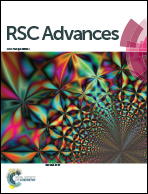Superior optical response of size-controlled silicon nano-crystals in a-Si:H/nc-Si:H superlattice films for multi-junction solar cells
Abstract
In order to facilitate widening in optical band gaps utilizing quantum size-effects in silicon nano-crystals (Si-ncs) of a few nanometers in dimension, self-assembled Si-ncs embedded in an a-Si matrix were grown within a-Si:H/nc-Si:H superlattice (SL) thin films produced by alternating sub-layers of a-Si:H and nc-Si:H from (SiH4 + H2)-plasma in PE-CVD at 180 °C, without post-deposition annealing. The growth of Si-ncs extending all through the nc-Si:H sub-layer thickness is terminated by the alternate deposition of an a-Si:H barrier layer during each cycle and the average size of the Si-ncs with a narrow size distribution is tuned by controlling each nc-Si:H sub-layer thickness. Significantly high-density tiny Si-ncs are grown even within an ultra-thin (∼3 nm) nc-Si:H sub-layer and that has been made possible via an ingenious approach, by utilizing the underneath of an a-Si:H sub-layer as the virtual incubation layer at a very specifically chosen parametric condition, during each cycle of periodic deposition. On systematic thinning of the nc-S:H active layer within 8–3 nm, a remarkable increase in optical absorption at near-UV photon energies along with simultaneous optical band gap widening within 1.89–2.04 eV demonstrate that the quantum size-effect in Si-ncs plays a key role. Subsequent lowering in the defect states identifies the nc-Si:H/a-Si:H SL-films as a superior material for use in devices, including as i-layers in triple-junction all-silicon solar cells.


 Please wait while we load your content...
Please wait while we load your content...